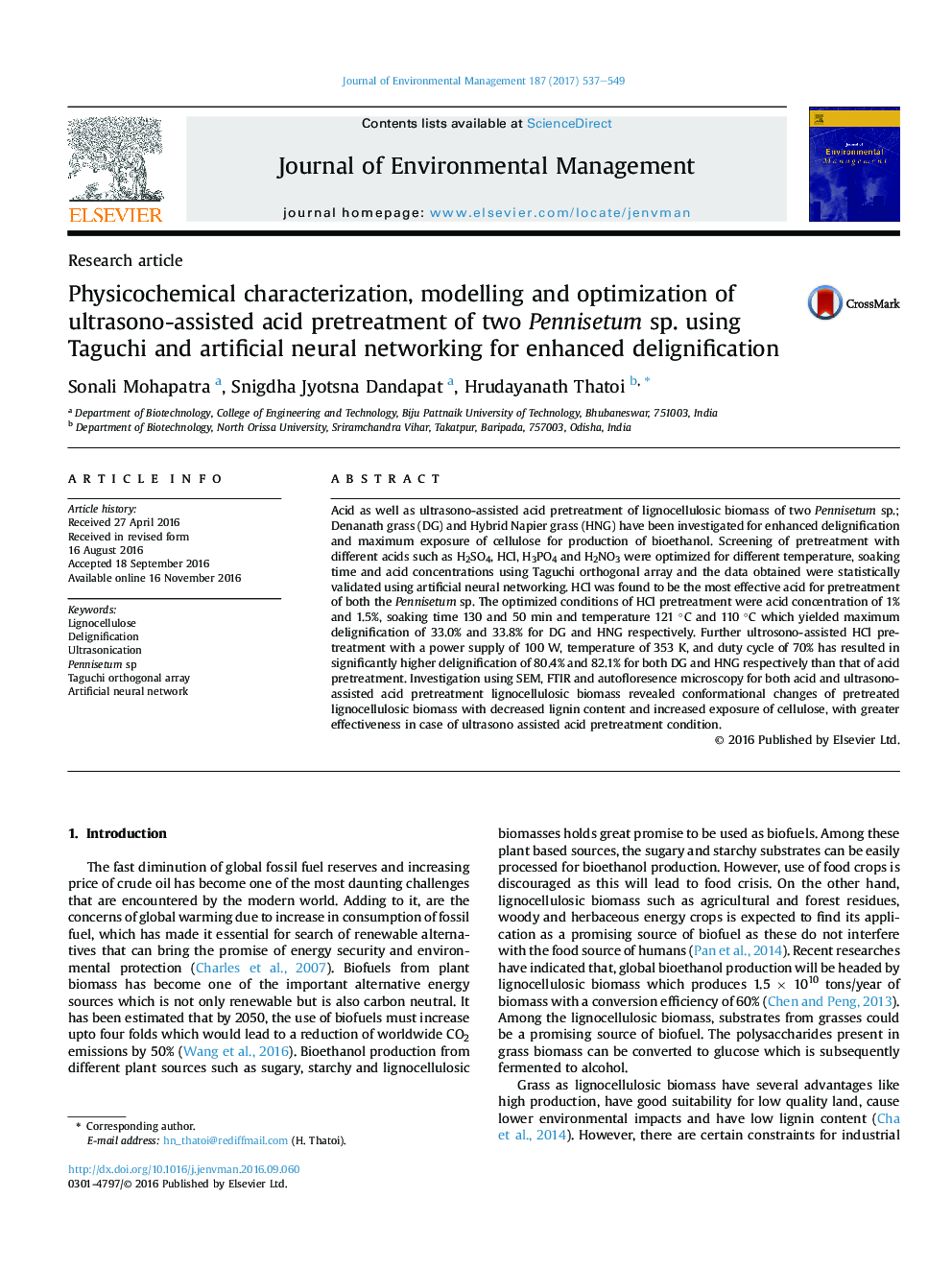| کد مقاله | کد نشریه | سال انتشار | مقاله انگلیسی | نسخه تمام متن |
|---|---|---|---|---|
| 5117403 | 1485228 | 2017 | 13 صفحه PDF | دانلود رایگان |

- TaguchiOA and ANN techniques accurately predicted significant delignification factor.
- Ultrasonication assisted acid pretreatment resulted in higher delignification.
- SEM, FTIR and Autofloresence sufficiently evidenced the findings.
- Kinetics of delignification is an important factor for pretreatment.
- Denanath grass can be a potential lignocellulose substrate for bioethanol production.
Acid as well as ultrasono-assisted acid pretreatment of lignocellulosic biomass of two Pennisetum sp.; Denanath grass (DG) and Hybrid Napier grass (HNG) have been investigated for enhanced delignification and maximum exposure of cellulose for production of bioethanol. Screening of pretreatment with different acids such as H2SO4, HCl, H3PO4 and H2NO3 were optimized for different temperature, soaking time and acid concentrations using Taguchi orthogonal array and the data obtained were statistically validated using artificial neural networking. HCl was found to be the most effective acid for pretreatment of both the Pennisetum sp. The optimized conditions of HCl pretreatment were acid concentration of 1% and 1.5%, soaking time 130 and 50 min and temperature 121 °C and 110 °C which yielded maximum delignification of 33.0% and 33.8% for DG and HNG respectively. Further ultrosono-assisted HCl pretreatment with a power supply of 100 W, temperature of 353 K, and duty cycle of 70% has resulted in significantly higher delignification of 80.4% and 82.1% for both DG and HNG respectively than that of acid pretreatment. Investigation using SEM, FTIR and autofloresence microscopy for both acid and ultrasono-assisted acid pretreatment lignocellulosic biomass revealed conformational changes of pretreated lignocellulosic biomass with decreased lignin content and increased exposure of cellulose, with greater effectiveness in case of ultrasono assisted acid pretreatment condition.
Journal: Journal of Environmental Management - Volume 187, 1 February 2017, Pages 537-549